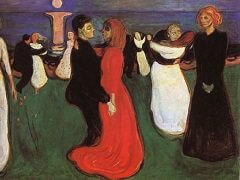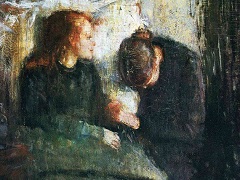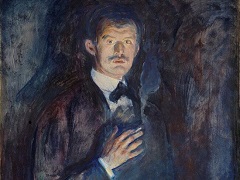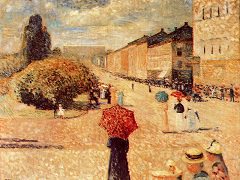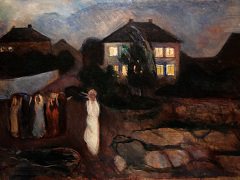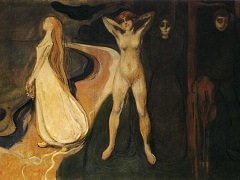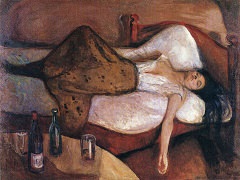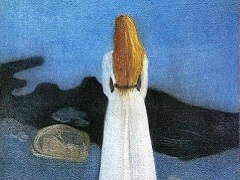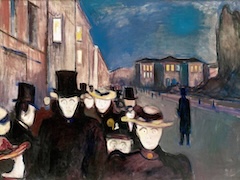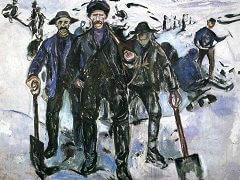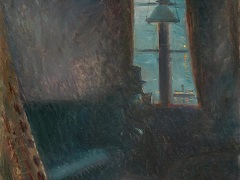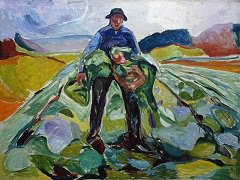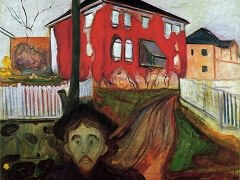Girls on the Bridge, 1899 by Edvard Munch
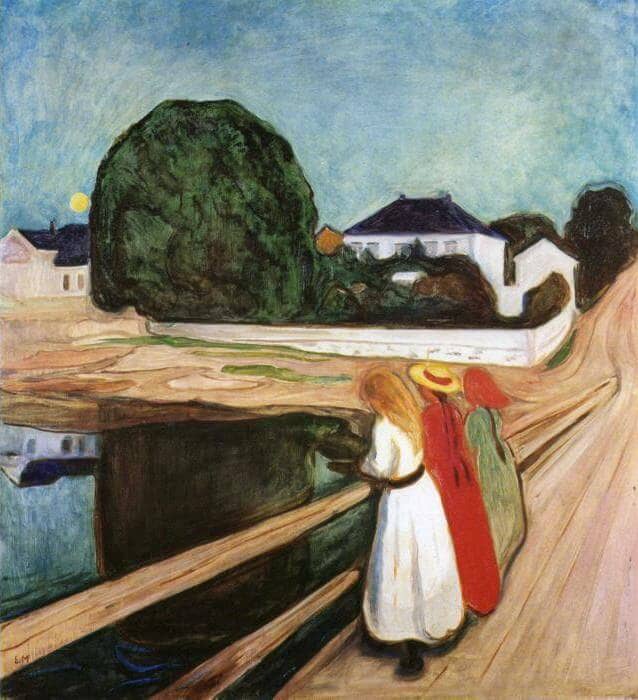
Perhaps more than any of Munch's painting, Girls on the Bridge has gained a wide measure of justly deserved popularity. The theme engaged and held Munch's interest through many versions in paint and print, from the waning years of the nineteenth century to his old age.
Despite its poetic strain, Girls on the Bridge is a literal translation of a scene at Aasgaardstrand. Now, a century after its original conception, the visitor to this spot at Oslo Fjord will find essentially unchanged the elongated pier continued by an upward sloping road, the curvature of the sandy shoredline interspersed with patches of green, and the old house itself surrounded in summer by foliage and overshadowed by the often portrayed three linden trees that have grown together as if to share a common crown. Framed by a white wooden fence, all these features are literal truth, not poetic fancy. In reflecting them, Munch turned his back on a picturesque little harbor on the invisible side of the bridge, fully furnished with small craft and all the banal trappings of a motif hunter's delight. Having selected his subject with care, he adhered to it closely. Without inhibiting the transmutation from model to formal analogy, the chosen scene, on the contrary, led the artist to the perfect solution.
Munch never demonstrated more convincingly his ability to achieve simultaneous separateness and wholeness. The tree forms, while singly readable, create an articulated strain of natural growth with the patches of grass that, together, stand in a contrapuntal relationship to the man-made elements - the house, the fence, and the bridge. The polyphonic opposition between these parts and its final resolution in a consonant pictorial surface is achieved with extraordinary formal command.



